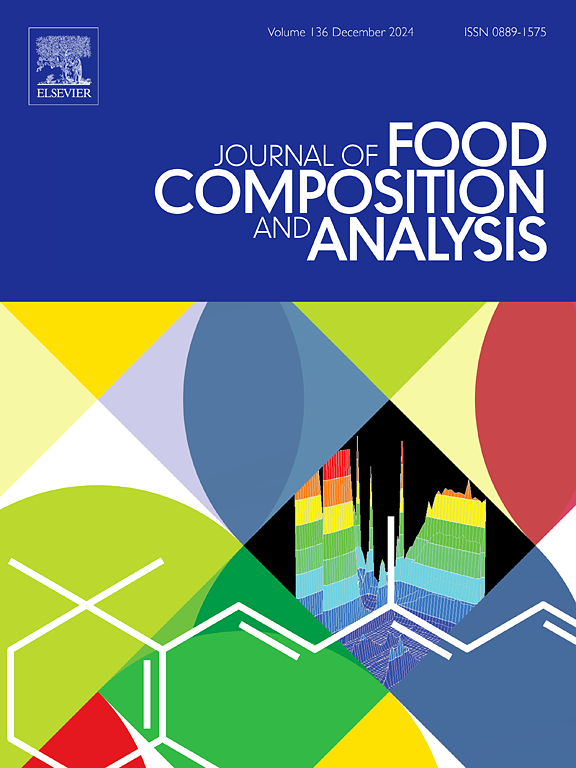Investigation of amino acid profiles in GABA tea from the 'Colchida' cultivar: Production and analytical method optimization using HPTLC and HPLC-DAD
IF 4
2区 农林科学
Q2 CHEMISTRY, APPLIED
引用次数: 0
Abstract
GABA tea is a relatively new type of tea produced through fermentation in an oxygen-free environment, which leads to increased levels of γ-aminobutyric acid (GABA). This study represents the first investigation into the development of GABA tea production technology using Russian raw materials, specifically the 'Colchida' cultivar, known for its high yield and exceptional quality. Various anaerobic conditions were applied to produce GABA tea samples, and a key focus of the research was to monitor the content of GABA and other amino acids (AAs) at different stages of the tea processing. A novel, sensitive HPTLC method using microcrystalline cellulose plates was developed for profiling AAs and quickly assessing GABA levels in tea products. Additionally, an HPLC-DAD method with pre-column derivatization using dansyl chloride was optimized and validated for the quantitative determination of AAs in GABA tea. Both HPLC and HPTLC methods yielded comparable results. Based on the findings, optimal conditions for further refinement of the GABA tea production process were identified. Elevated levels of other amino acids, particularly alanine and theanine, were also observed. The developed analytical methods are effective for routine AA analysis in tea products and hold promise for further optimization of GABA tea production technology.
求助全文
约1分钟内获得全文
求助全文
来源期刊

Journal of Food Composition and Analysis
工程技术-食品科技
CiteScore
6.20
自引率
11.60%
发文量
601
审稿时长
53 days
期刊介绍:
The Journal of Food Composition and Analysis publishes manuscripts on scientific aspects of data on the chemical composition of human foods, with particular emphasis on actual data on composition of foods; analytical methods; studies on the manipulation, storage, distribution and use of food composition data; and studies on the statistics, use and distribution of such data and data systems. The Journal''s basis is nutrient composition, with increasing emphasis on bioactive non-nutrient and anti-nutrient components. Papers must provide sufficient description of the food samples, analytical methods, quality control procedures and statistical treatments of the data to permit the end users of the food composition data to evaluate the appropriateness of such data in their projects.
The Journal does not publish papers on: microbiological compounds; sensory quality; aromatics/volatiles in food and wine; essential oils; organoleptic characteristics of food; physical properties; or clinical papers and pharmacology-related papers.
 求助内容:
求助内容: 应助结果提醒方式:
应助结果提醒方式:


